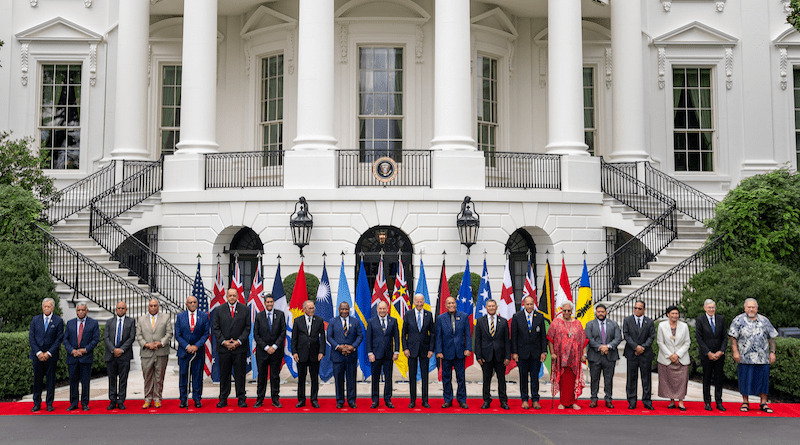Dr. Theodore Karasik

In the Asian theater, the islands of the Pacific Ocean serve a specific function in terms of security awareness. The US and China continue to compete for influence and to project force on these islands and island chains, which are surrounded by vast expanses of water.
The world’s oceans, as we know, can become hotly contested spaces when politics enters the mix. And islands can play an important role in terms of security or, conversely, malign behavior.
The concept of “island chain strategy” is nothing new. It grew out of the lessons learned from the Second World War and the Korean War in the early 1950s. US security officials designed a five-chain concept for the Pacific Ocean islands, using geography as a tool. The island chains run north-to-south, with the first three mostly related to Taiwan and the Philippines, but also including Hawaii. Chains four and five focus more on the island chains that are contested today, especially those that lie deeper in the Indo-Pacific area.
China’s interests in the Pacific Ocean have expanded greatly, drawing a response from the US and its allies, including Australia and Japan. In an attempt to counter China, the US is upping its presence on islands in the mid-Pacific for the first time in almost 80 years.
Certainly, islands can function as important hubs no matter where they are in the world, but in the Pacific they are particularly significant because of the distances involved and their power projection capability.
US power in the Pacific is concentrated around a few large bases, including Andersen Air Force Base on Guam and Kadena Air Base on the Japanese island of Okinawa. But if too much American air power is concentrated there, missile strikes on these bases could potentially cripple the ability of the US to hit back at an adversary. Therefore, Washington is playing a shell game on islands in the Pacific Ocean in an attempt to match moves by China.
The US views China in this Pacific arena as a “pacing threat” that is growing over time, slowly spreading and creeping onto various islands. China seeks to supplant the US in the area by changing the status quo of the region, and the wider international system, to better align with its interests. Beijing seeks to challenge Washington and its allies and partners in the Pacific by leveraging its growing capabilities to coerce its neighbors.
Beijing’s strategists study how best to influence outcomes in the region on a case-by-case basis. In 2019, for example, it succeeded in getting the island nation of Kiribati to switch its diplomatic recognition of Taiwan to China. It also established a Huawei data center in Papua New Guinea as a way to corner the telecoms and data market there.
China is also involved in projects with the police in Fiji and has set up research centers in several places, including the Solomon Islands. In Samoa, China opened a Confucius Institute language school, which Washington views as a front for spreading Chinese influence.
From China’s viewpoint, the region it terms Oceania reflects the classic Chinese doctrine of “three warfares:” psychological warfare, the media or public opinion, and lawfare, which is the use of legal systems and institutions to damage or delegitimize opponents.
In the Solomon Islands, for example, the Chinese government used its influence across several issues in the media as a means to gain clout. High unemployment in the country has helped exacerbate the tensions that have allowed Beijing to exercise more influence there. If the Solomon Islands is destabilized, spillover effects on other Pacific Ocean islands are highly probable, which would challenge the interests of both the islands and the US.
In an attempt to counter China, the US plans to focus on Pacific island airfields. The idea is for Washington to broaden its options for establishing military bases in the event of any hostilities arising from China’s “three warfares” on any Pacific islands.
For example, the US is once again using Tinian in the mid-Pacific as a base for its air and maritime activities. Tinian is part of the Northern Mariana Islands, a US territory that is about 6,000 km west of Hawaii. Only about 3,000 people live on the 101 sq. km island, but it has multiple airports serving various types of aircraft.
Strategically, Tinian and the nearby islands of Saipan and Guam have a rich history of US air operations. During the Second World War, all three islands served as bases for fleets of B-29 Superfortress bombers after they were captured from the Japanese.
Islands such as Tinian offer the US and its allies significant outposts that they can use to disperse their forces throughout the region via an island-based hub-and-spoke system of military bases.
These islands are strategically important resources that can help secure and expand national interests in a competitive strategic environment. Competition and confrontation between the Pacific powers over such islands is therefore now perennial.
No comments:
Post a Comment